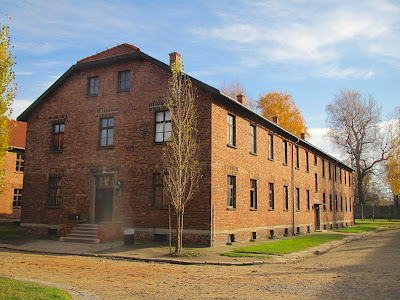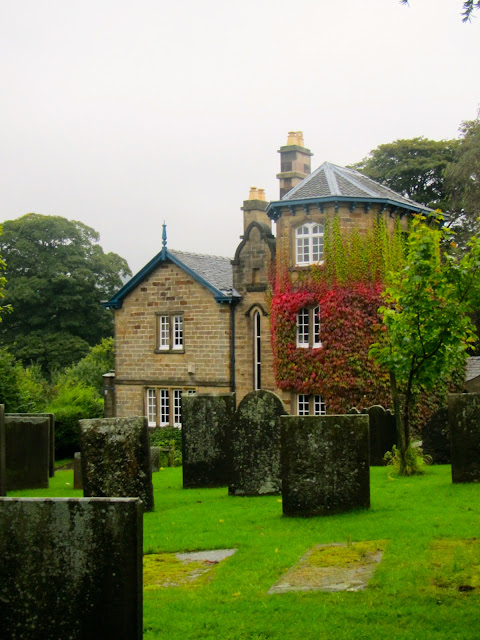Ironically, it was a beautiful, sunny fall day when we journeyed from Krakow and made our way to one of the coldest and darkest places on earth: the Auschwitz concentration camp, a network of concentration and extermination camps set up by the Nazis during World War II. Greeting us as we entered, was the iconic sign Arbeit Macht Frei, which translates as Labor Makes You Free.
There was no freedom here for the 1.3 million who died, 90% of whom were Jewish.
Auschwitz I, the base camp, was the administrative arm of the complex with its brick barracks, storage warehouses, prisoner cells, and an area for "experimental" medical testings,
and Auschwitz-Berkenau was known as the extermination camp where most of the "final solution of the Jewish question in Europe" was carried out.
Between 1922-1944, transport trains dropped off hundreds of thousands prisoners to this location, where upon disembarking, doctors would separate them into two groups, the young and hearty in one group, and then the children, mothers, ailing, weak and elderly were sent to the other side
where many were exterminated immediately. Three-fourths of the total prisoners
were selected to die. Those who remained prisoners in the labor camps suffered severe hardships, and often died of starvation, illness, or from the freezing conditions.
The barracks contained long rows of wooden bunks where the prisoners were forced to sleep on top of each other, often lying on their clothes so they wouldn't be stolen.
Records show that 800-1000 were sometimes crammed into the compartments of each barrack.
It was with great sadness that we read the names of many like Maria, who were killed.
Seeing the faces of the children was most difficult of all.
When the prisoners disembarked from the trains, they were told to leave their possessions behind,
many of their personal items being gathered up and sent to "Kanada," a warehouse that stored their earthly possessions, and then were sent back to Germany to be distributed.
Canada symbolized wealth to the prisoners. Toiletries, cooking utensils, clothing and even hair were saved and were on display at the current exhibition.
Sweet touchstones of innocent babies and children who died way too soon.
We witnessed sites of the atrocities, the hanging square,
the Black Wall, where SS guards executed thousands,
and what was left behind of the crematoriums. Heartbreaking stories of families torn apart by the atrocities inflicted upon them.
I was privileged to travel with Joan who had a personal connection to the camp. She was named after her Jewish great-grandmother who had died at Auschwitz. When her grandmother finished her schooling, Joan's great-grandmother put her on a boat to America, sending her away, and on that day gave her the earrings off of her ears as she departed. Her great grandmother and some of her siblings later were sent to Auschwitz. Joan's family line was thus spared when her grandmother left Europe, and she owns those very earrings and wore them in her great grandmother's honor, the day we visited the camp.
This story is one of millions more of the people whose lives were lost in one of the world's most awful atrocities. It was extremely difficult to experience the surroundings, but it was a vivid reminder of the evil that can occur in this world if left unchecked and not challenged. May the memory of those lost remind us of the common humanity of us all and our responsibility towards our fellow man.









































































